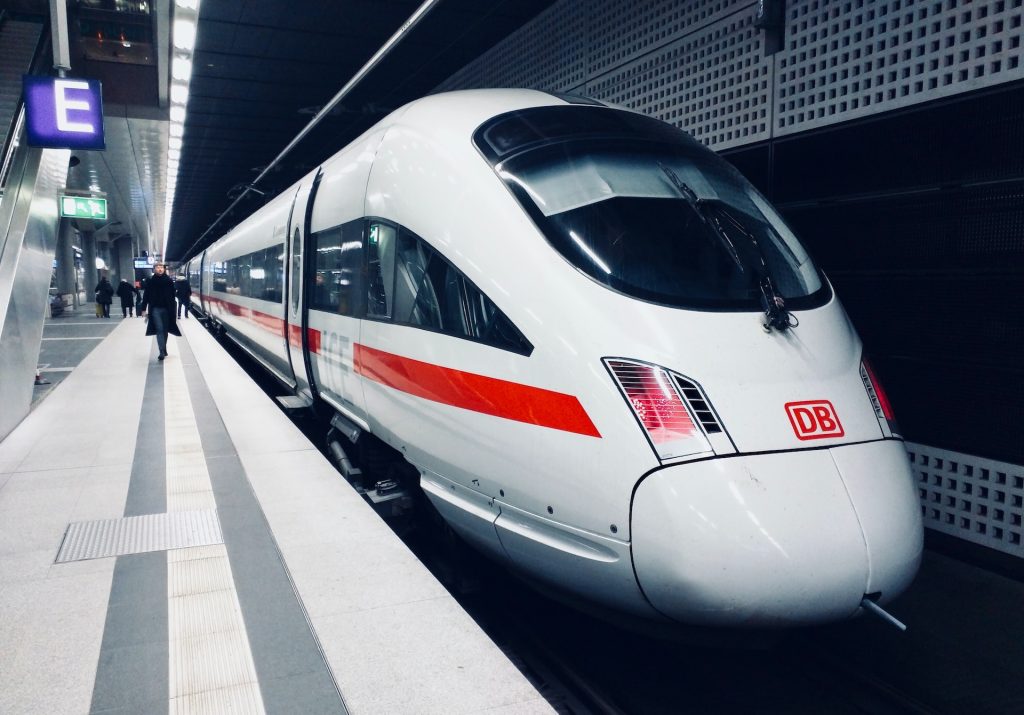High-speed rail has long been a symbol of modern transportation and technological advancement in many countries around the world. It promises efficient, eco-friendly, and rapid travel between major cities, reducing congestion on highways and the environmental impact of air travel. However, the United States has lagged behind in the development of high-speed rail systems, despite its immense size, population density in certain regions, and the potential benefits it could bring. This article delves into the complex reasons why America doesn’t have a comprehensive high-speed rail network.
Infrastructure Challenges
One of the primary obstacles to implementing high-speed rail in the United States is the vastness of the country and the state of its existing rail infrastructure. Unlike countries in Europe and Asia, the U.S. lacks the dense, well-connected rail networks that are necessary for high-speed trains to operate effectively. Many existing railroads are not equipped for high-speed travel and would require significant upgrades or replacement.
Additionally, acquiring the necessary land and right-of-way for new high-speed rail routes can be a lengthy and costly process. Opposition from property owners, environmental concerns, and regulatory hurdles often slow down or block new rail projects.
Funding and Budget Constraints
High-speed rail projects require substantial financial investments. While the United States has the resources to fund such projects, it often faces budget constraints and political gridlock. Federal and state governments are typically responsible for funding rail infrastructure, and securing the necessary funds can be challenging.
The American political landscape often prioritizes short-term, visible projects over long-term infrastructure investments. This focus on immediate benefits can hinder the allocation of funds for high-speed rail, which offers long-term economic, environmental, and transportation advantages.
Lack of Political Consensus
High-speed rail projects involve collaboration between federal, state, and local governments, as well as private sector partners. The lack of a unified vision and political consensus has hindered progress on these projects. Different political parties and stakeholders may have conflicting views on the necessity, feasibility, and funding of high-speed rail.
Political shifts and changes in leadership can also disrupt the continuity of high-speed rail projects. Without consistent support and a shared vision for high-speed rail, projects can experience delays and cancellations.
Competition from Other Modes of Transportation
The United States has a well-developed and heavily relied-upon road network, as well as a robust airline industry. These modes of transportation are deeply ingrained in American culture and offer significant competition to high-speed rail. Americans often prefer the convenience of personal vehicles and the speed of air travel, making it challenging for high-speed rail to establish itself as a viable alternative.
To compete effectively, high-speed rail would need to offer compelling advantages, such as faster travel times, lower costs, and reduced environmental impact. Convincing Americans to change their travel habits is no small feat.
Regional Fragmentation
High-speed rail projects are often designed to connect major cities and regions, but the United States has a fragmented transportation system with different regions pursuing their own priorities. While some regions, like the Northeast Corridor, have made progress in developing high-speed rail, others have been slower to embrace the concept.
This regional fragmentation can create challenges in coordinating efforts and securing the necessary political and financial support for a nationwide high-speed rail network. It also means that the benefits of high-speed rail are not evenly distributed across the country.
Regulatory Challenges
Regulatory hurdles, including safety standards, environmental impact assessments, and land-use regulations, can slow down or derail high-speed rail projects. The United States has stringent safety regulations for rail travel, which is essential for passenger safety but can also increase project costs and timelines.
Environmental concerns, such as the impact on wildlife and ecosystems, can also lead to legal challenges and delays. Balancing the need for environmental protection with the development of high-speed rail is a complex issue that requires careful consideration.
Private Sector Involvement
High-speed rail projects often require partnerships with the private sector for funding, construction, and operation. However, private sector involvement can be challenging to secure, as investors may be wary of the risks and uncertainties associated with such projects.
Additionally, the long-term nature of high-speed rail projects means that returns on investment may not be realized for many years. Private investors often seek shorter-term returns, making it difficult to attract the necessary capital for high-speed rail.
Public Perception and Awareness
Public perception plays a crucial role in the success of high-speed rail projects. Many Americans may be unaware of the benefits of high-speed rail or may hold misconceptions about its cost, safety, and efficiency. Effective public outreach and education campaigns are essential to build support and dispel myths surrounding high-speed rail.
The absence of a comprehensive high-speed rail network in the United States is the result of a complex interplay of factors, including infrastructure challenges, funding constraints, political dynamics, competition from other modes of transportation, regional fragmentation, regulatory hurdles, private sector involvement, and public perception. While these challenges are significant, they are not insurmountable.
High-speed rail has the potential to revolutionize transportation in the United States, offering faster and more sustainable travel options between major cities. To make progress, it will require a concerted effort from governments at all levels, private sector partners, and public support to overcome these challenges and make high-speed rail a reality in America. With the right vision, investment, and determination, the United States can join the ranks of countries with successful high-speed rail networks and reap the benefits of a more efficient and sustainable transportation system.
Potential Solutions and Future Outlook
While the challenges to implementing high-speed rail in the United States are numerous and complex, there are potential solutions and strategies that can pave the way for a brighter future for high-speed rail in the country.
Federal Leadership and Funding
One critical step in advancing high-speed rail is strong federal leadership and funding. The federal government can play a pivotal role in providing financial support, streamlining regulations, and coordinating efforts across states and regions. A dedicated funding source, similar to the Highway Trust Fund for roads, could ensure a stable source of revenue for high-speed rail projects.
Regional Collaboration
High-speed rail projects are more likely to succeed when multiple states and regions work together to develop interconnected networks. Collaborative efforts can pool resources, share costs, and create a more extensive and efficient high-speed rail system. Successful examples of regional cooperation can be found in Europe, where countries have seamlessly connected their high-speed rail networks.
Public-Private Partnerships
To attract private sector investment, the government can explore innovative public-private partnerships (PPPs). These partnerships can help share the financial risks and rewards of high-speed rail projects, making them more appealing to investors. Governments can provide incentives such as tax breaks, land grants, or revenue-sharing agreements to entice private sector involvement.
Infrastructure Upgrades
Investment in rail infrastructure is essential for high-speed rail implementation. Existing rail networks should be upgraded and modernized to accommodate high-speed trains. This includes improving tracks, signaling systems, and station facilities. Upgrades can occur incrementally, allowing for cost-effective improvements over time.
Public Education and Outreach
Building public support and dispelling misconceptions about high-speed rail are vital steps in its successful implementation. Governments and advocacy groups should engage in comprehensive public education campaigns to highlight the benefits of high-speed rail, such as reduced travel times, lower emissions, and enhanced economic development in regions served by these systems.
Environmental Considerations
High-speed rail projects should prioritize environmental sustainability. This means conducting thorough environmental impact assessments and implementing measures to minimize ecological harm. Additionally, adopting technologies like electric trains powered by renewable energy sources can help reduce the carbon footprint of high-speed rail.
Pilot Projects
Starting with smaller, manageable high-speed rail pilot projects can demonstrate the feasibility and benefits of this mode of transportation. Successful pilot projects can generate enthusiasm and support for larger-scale initiatives. For example, the successful introduction of high-speed rail on the Northeast Corridor between cities like Boston, New York, and Washington, D.C., could serve as a model for expansion to other regions.
Long-Term Vision
High-speed rail development requires a long-term vision and commitment from policymakers. Consistency in planning and funding is essential to see these projects through to completion. By setting clear goals and priorities, the United States can steadily work toward building a nationwide high-speed rail network.
The absence of a comprehensive high-speed rail network in the United States is a multifaceted issue with no easy solutions. However, by addressing infrastructure challenges, securing funding, fostering political consensus, and prioritizing public education and outreach, the U.S. can overcome these obstacles. High-speed rail has the potential to transform the way Americans travel, reducing congestion, lowering emissions, and improving connectivity between cities and regions.
While progress may be slow, it is crucial for the United States to invest in high-speed rail for the long-term benefit of its citizens and the environment. By learning from successful examples in other countries, collaborating across regions, and embracing innovative approaches, the U.S. can build a high-speed rail network that reflects its vast potential and redefines modern transportation in the 21st century. The road ahead may be challenging, but the rewards of a comprehensive high-speed rail system are well worth the effort and investment.






